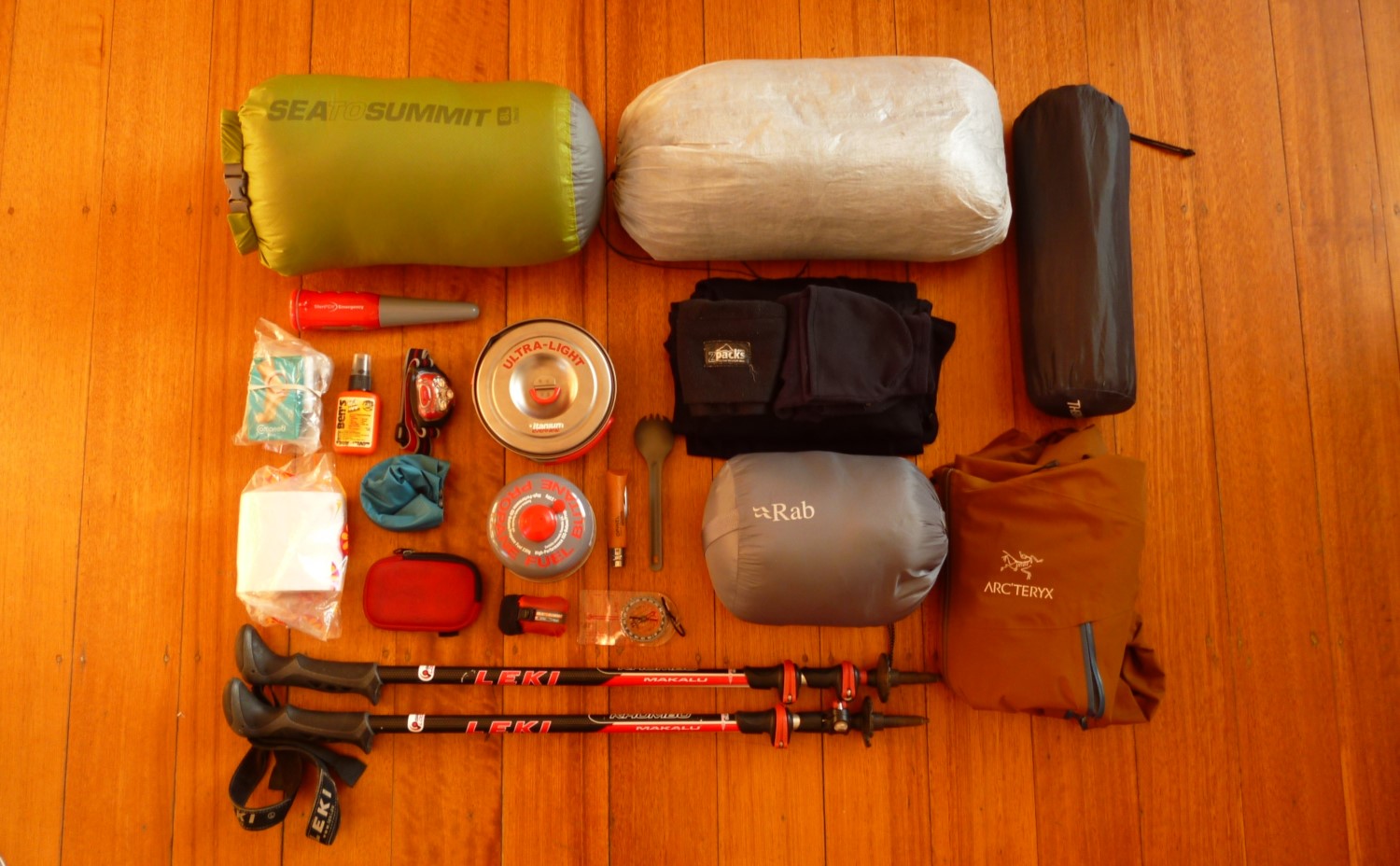Best Dive Watches Under $2000 of 2023
JUMP TO: SEIKO PROSPEX / DAVOSA TERNOS CERAMIC / MARATHON JSAR QUARTZ / TAG HEUER AQUARACER / LONGINES HYDROCONQUEST / BUYING ADVICE
Author: Rose Martin
The Short Version
Best Overall: Seiko Prospex SPB143J1
Best for Daily Wear: Davosa Ternos Ceramic
Best for Professionals: Marathon JSAR Quartz
Best for Readability: Tag Heuer Aquaracer BA0927
Best on a Budget: Longines Hydroconquest
The Long Version
As we explained in our Best Dive Watches article, dive watches were an essential bit of gear back in the days when recreational diving was starting out. Just like ordinary watches, they display the time, and often the date, but they also come with a range of features that makes them suited to diving.
Yet despite some similarities, dive watches vary hugely when it comes to extra features, materials, and, crucially, price. The most luxurious dive watches are produced by world-renowned watch manufacturers, like Omega and Rolex. They’re constructed from premium materials, look incredibly stylish, and will last for years to come… and they can easily set you back more than $10,000.
But if that’s a bit beyond your price range, don’t worry – there are heaps of dive watches out there with high-end features that cost a lot less. In fact, if you’re willing to spend up to $2000, you’ll have your pick of some of the top dive watches around.
Yet not all dive watches are created equal, and it can be hard to spot the diamonds in the rough. So, to save you some time when you’re shopping around, we’ve brought you this selection of the best dive watches for under $2000 – enjoy!
If you love reading this review of the best dive watches under $2000, then you'll likely love reading some of our other diving content:
Need To Know What To Look Out For?
About to buy your first dive watch and feeling overwhelmed? Check out our buying advice section at the bottom of the page – we breakdown all the key features and technical terms to make your first buy that bit easier!
Best Overall: SEIKO PROSPEX SPB143J1
DIAMETER: 40.5 mm
MOVEMENT: Automatic
WATER RESISTANCE: 200 m
PRICE: $$$
PROS: Great value for money, clear display, elegant, light, comfortable
CONS: Not within everyone’s budget
Seiko has been producing dive watches since 1965, so they’ve had a long time to perfect their craft. This expertise is clearly displayed in the Seiko Prospex SPB143J1, a modern reinterpretation of one of their earlier watches.
The small case diameter and stainless-steel case and band give this watch a compact, elegant appearance. The stylish black dial has remained surprisingly uncluttered despite featuring minute markers, baton hour markers, and a date display in the 3 o’clock position. The unidirectional bezel is decorated with dotted minute markers as well as stick indices every 5 minutes and Arabic numerals every 10 minutes, so it’s super easy to keep track of time, and the edge is continuously serrated for easy use while wearing gloves.
Yet despite its graceful appearance, this watch can handle some serious wear and tear… The stainless-steel case is protected by a super hard coating, and the sapphire crystal guarding the dial is anti-reflective and highly scratch-resistant. We also like that the stainless-steel band features a three-fold clasp as well as an extra secure fastener to make sure there’s no chance of losing your watch underwater. Plus, despite its robustness, the Prospex has remained lightweight and exceptionally comfortable to wear.
The hands, indexes, and bezel are all filled with luminous material that will shine brightly for 3–5 hours (so enough time for a double-tank dive!) after just 10 minutes’ exposure to natural or artificial light, and this watch comes with a water-resistance rating of 200 meters.
It might not be the cheapest option out there, but this durable watch comes fully equipped with all the features you could ask for in a dive watch… and it looks awesome too.
Best for Daily Wear: DAVOSA TERNOS CERAMIC
DIAMETER: 40 mm
MOVEMENT: DAV 3021 (automatic)
WATER RESISTANCE: 200 m
PRICE: $
PROS: 2-year warranty, luminous hands and magnified date display, stylish design, great value for money
CONS: Small face might not suit everyone
If you’re after a high-quality dive watch that’s just as suited to life in the office as it is underwater, then the Davosa Ternos Ceramic could be just what you’re looking for.
Featuring a classic black dial, a case diameter of just 40 mm, and a stainless-steel strap, this watch is excellent for formal occasions. There’s also a magnified date display at the 3 o’clock position, which is super handy at the office as well as for dive logging. The lightweight ceramic bezel, combined with the small face, has helped to keep the overall weight down, and the automatic movement means that you can forget about daily winding.
As well as being an awesome watch for day-to-day wear, the Davosa Ternos is packed full of diving-friendly features. These include luminous hands and indices, a unidirectional bezel that’s continuously grooved for easy operation even when wearing gloves, and, of course, a water-resistance rating of 200 meters.
What’s more, despite its fairly modest price tag, the Davosa Ternos Ceramic is constructed from high-quality materials, like sapphire crystal, ceramic, and stainless steel, so it can stand up to saltwater, scratches, and general bumps and scrapes no problem. Plus, in the unlikely event you do run into trouble, this watch come with a 2-year warranty for added peace of mind.
If you’re after a dependable watch you can wear not only on dives but also to work, to weddings, and even at home washing the dishes, this watch is an excellent choice.
Best for Professionals: MARATHON JSAR QUARTZ
DIAMETER: 46 mm
MOVEMENT: 3 Jewel ETA F07 Quartz
WATER RESISTANCE: 300 m
PRICE: $
PROS: Detailed markers, durable, various straps available, large diameter aids readability, great for dive professionals
CONS: Large face might not suit everyone, quite busy display
If you’re a professional diver who often times underwater activities, then you should definitely check out the Marathon JSAR Quartz.
You’ll never lose track of time thanks to the detailed minute markings right the way around the dial as well as the Arabic numerals at each hour marker denoting both the 12 and 24-hour clocks ( you can also opt to have a distinctive maple leaf at the 12 o’clock position or not). What’s more, the unidirectional bezel features continuous minute markings as well as digits every 10 minutes – perfect for timing students, surveys, and more. Plus, despite this detail, the JSAR has remained surpringly uncrowded thanks to the large 46 mm case diameter. We also like that the luminescent paint applied to the hands and dial markets glows for up to 8 hours after just a short exposure to light, so you don’t need to remember to charge it up for hours before each dive (which is great if you’ll be diving daily).
Constructed from surgical grade stainless-steel and highly scratch-resistant anti-reflective sapphire crystal, and with a whopping 300-meter water-resistance rating to boot, this is one rugged watch that can handle daily use for years to come. When it comes to the strap, you have the choice of a matching stainless-steel band for a more professional look or a lighter (and more economical) rubber strap.
Sure, the large case diameter does make the watch bulkier than some of the more formal dive watches out there (it won’t sit unnoticed under your shirt sleeve), and it also means this watch isn’t an ideal choice for people with particularly small wrists. However, for dive professionals seeking a durable and dependable way of keeping track of time, the Marathon JSAR Quartz could be the one.
Best for Readability: TAG HEUER AQUARACER BA0927
DIAMETER: 43 mm
MOVEMENT: Automatic
WATER RESISTANCE: 300 m
PRICE: $$$
PROS: High-quality construction, easy to read, suitable for everyday use, women’s version available
CONS: Slightly bulky face, bezel could be more detailed
Hate wasting precious time underwater squinting at your dive watch? Well, you’re in luck – the Tag Heuer Aquaracer dial is so easy to read that you can tell the time with just a quick glance.
This is largely thanks to the generous case diameter and clutter-free dial. By using simple baton hour markers, and hands of a similar style, the watch has avoided the ‘busyness’ of less well-designed watches. The date display at the 3 o’clock position forms part of the hour marker to avoid taking up extra space, and the hands and markings all stand out brilliantly against either the navy blue or black background (personally, we prefer the blue – it adds a great nautical touch). On top of that, we also love that the brushed stainless-steel finish is awesome at minimizing glare, so this watch is super easy to read even at the surface on sunny days.
The unidirectional bezel also takes a minimalistic approach, with Arabic numerals every 10 minutes and markings every 5. Although this keeps things nice and clear, just bear in mind that there are no minute markers, which could be a pain if you plan on using precise timings underwater. It’s also not as heavily serrated as many other models, making it lightly less glove-friendly.
Both the case and strap are made of corrosion-resistant stainless steel, and the dial is protective by premium sapphire crystal. The hands and hour markers are coated in luminescent, and the watch comes with a solid water-resistance rating of 300 meters. The movement is automatic, and it comes with a 38-hour power reserve.
The large case might put off people with smaller wrists (but we like that there’s a female version available too), but, overall, we can’t get enough of this stylish, durable, and easy-to-read dive watch.
Best on a Budget: LONGINES HYDROCONQUEST
DIAMETER: 39 mm
MOVEMENT: Quartz L263
WATER RESISTANCE: 300 m
PRICE: $
PROS: Slim design, lightweight construction, great balance of quality and price
CONS: Not the best for large wrists
If you’re after a dive watch with a touch of luxury, but don’t have much cash to splash, then we definitely recommend the Longines Hydroconquest.
The black-and-white dial has been paired with a stainless-steel case and strap for a highly sophisticated look overall. What’s more, with a case diameter of just 39 mm, this watch is sleek and lightweight, making it a great option for everyday wear as well as formal occasions.
The dial features continuous minute markings and there’s a date display in the 3 o’clock position. But, don’t worry, the Hydroquest has remained easy to read despite the detail and small case thanks to the rounded indexes every 5 minutes and the large 6, 9, and 12 numerals. Oh, and you’ll be able to read this watch in the dark too thanks to the luminous fill on the hands and hour markings.
The one-way bezel is partially serrated to aid grip, and it boasts detailed markings so you can keep a beady eye on your bottom time. It’s also constructed from lightweight corrosion-resistant ceramic to help cut down the weight even further. The sapphire crystal used to protect the dial is extremely robust and highly scratch-resistant, and this watch comes with an awesome water-resistance rating of 300 meters. The quartz movement is highly accurate and doesn’t require winding, yay.
The small case might not suit everyone, particularly people with large wrists, and the face is perhaps a tad crowded. However, overall, this is one seriously well-designed watch with heaps of high-end features despite it’s reasonable price tag.
BUYING ADVICE FOR DIVE WATCHES
Construction
SIZE: Dive watches come in a range of sizes. Faces with larger diameters can be easier to read, and there’s more space for extra touches like date displays and additional dials. On the flipside, larger faces add to the overall bulk and weight of the watch, which can put some people off wearing them for day-to-day activities, and it can ramp up the cost too because of the extra materials.
Ultimately, which size you like will come down to personal preference. But it’s a good idea to try out a few different sized watches before you order anything online, so you don’t end up with a horrible surprise.
MATERIALS: As they’re designed for use in salt water, dive watches must be constructed from anti-corrosive materials. Stainless steel is the most common materials used for the cases thanks to its excellent corrosion resistance, but gold is also used for some of the more luxurious watches, and ceramic is often used for the bezel because it’s tough and light.
Dive watches should also be strong enough to handle those inevitable bumps and scrapes that occur when you’re lugging your scuba gear around, so they feature thick crystals to protect them. Sapphire is the most scratch-resistant, but it’s also pretty expensive, and the more economical watches tend to use mineral or Hardlex crystals instead.
STRAP: Dive watch straps are typically constructed from stainless steel (to match the case) or some kind of rubber (especially the ‘sporty’ watches). You find leather and fabric straps out there too, but these generally aren’t considered as robust.
Many watches have straps you can swap too, so you could always wear your watch with a leather strap for day-to-day use then swap it out for a rubber strap for your diving holidays.
Display
ANALOGUE VS DIGITAL: In 1926, Rolex introduced the world’s first water-resistant watch – the ‘Oyster’. A few years later, Omega released the Omega Marine, the world’s first diving watch.
These analog watches inspired dive watches for years to come, and it wasn’t until 1972 that the digital watch was created. By the 1980s, dive computers were already beginning to take off, so there wasn’t much time for digital diving watches to thrive. This means that the vast majority of dive watches are analog and, inspired by those early creations, tend to be sleek and elegant.
Despite this, some digital watch manufacturers, like Casio, have branched out into the realm of waterproof watches suitable for diving, so there are a few digital dive watches on the market. They tend to be bulky and made of rubber, and embrace the typical sporty look rather than try to compete with the classics when it comes to old-school charm.
Both types of watch function perfectly well underwater, so the choice will ultimately come down to personal preference.
DEALING WITH DARKNESS: if you’re diving at depth on a cloudy day, things can get pretty dark. Plus, cave and wreck dives are often carried out in complete darkness. So, a dive watch needs to be readable even in the pitch black. Analog watches handle this by adding a luminous fill to the hands and minute markers, while digital watches use backlights instead.
SUBDIALS: Dive watches tend to have fewer subdials than regular watches, as they’re so small they’re difficult to read underwater, especially if the light is limited. Despite this, there are some dive watches on the market with subdials that provide additional functions, like tracking elapsed time or displaying a different time zone.
DATE DISPLAY: Many dive watches feature a date display in either the 3 or 6 o’clock positions. Some will show just the date, while others will include the day too. And some watches place a magnifier over the window so it can be read more easily.
Although a date display isn’t an essential feature when it comes to diving, many dive watches are designed to be worn for regular activities too, and a date display is a useful feature for watches designed to be worn on land as well as in the water.
Movement
The movement is the powerhouse of any watch, and they’re typically manual, automatic, or quartz.
MANUAL: Manual movements are entirely mechanical and require extremely careful craftsmanship, which is why they’re often the movement of choice for highly esteemed watchmakers. The energy from a wound spring is used to power the watch, and some require daily winding while others can operate for several days (depending on how big the power reserve is).
AUTOMATIC: Automatic movements are similar to manual ones when it comes to craftsmanship, but the spring is powered by wrist movement. This avoids the need for manual winding, unless you haven’t worn your watch for a while.
QAURTZ: Quartz movements use battery power to keep track of time, and they’re known for being the most accurate type of movement. Battery life varies, but they typically last anywhere from 10 to 24 months before they need changing. Nowadays, there are solar quartz watches on the market that can be recharged with sunlight, so the battery may never (or rarely) need replacing.
Other features
ROTATING BEZELS: When you’re on a dive, you want to be able to sit back and relax and not have to remember lots of pesky details, like what time you got in the water.
But it’s super important you know how long you’ve been diving… so, what’s the solution?
A rotating bezel of course!
Just before you descend, you rotate the bezel marker so it’s aligned with the minute hand. The hand will then move as the dive progresses, but the marker will stay put. This means you can tot up how many minutes have passed by counting the minutes between the bezel marker and the minute hand (most dive watches have 5-minute markings along the bezel to help with this).
The bezel 0-marker (and sometimes the other markers) will be luminous, just like the hand, so you can keep track of your dive time even in the dark. As a safety precaution, dive watch bezels only rotate in one direction (clockwise), this means that you can’t accidentally knock the bezel marker forwards during the dive, which would indicate that you’ve sent less time underwater than you really have.
HELIUM RELEASE/ESCAPE VALVE: This is a spring-loaded valve that can open manually or automatically, and allows helium to safely escape from the watch on ascent.
Watches with this feature are catered to saturation divers, who breathe in air mixtures containing a high concentration of helium at significant depths. Although dive watches keep out large molecules, like water, they’re unable to keep out helium because of its tiny molecular size, so it eventually makes its way inside the watch.
During ascent, decreases in atmospheric pressure cause gas that’s absorbed into the body tissues (and into the back of the watch) to diffuse back into the environment. Divers make decompression stops to allow gas to safely leave their body, and the helium escape valve does the same thing for the watch – it provides a passageway for helium to leave the watch without causing damage.
WATER RESISTANCE: Of course, all good dive watches need to be waterproof, and you’ll see that they all come with waterproof ratings – but what do they actually mean?
Well, the main thing to know is that a waterproof rating of, say, 30 meters, doesn’t mean that a watch can handle being submerged at that depth for extended periods of time.
Water-resistance ratings actually refer to how well a watch can stand up under pressure, and this changes with depth. So, if you’ll be diving at around 30 meters, don’t be fooled into thinking you’re okay with a watch with a 30 m waterproof rating.
Although you might get away with using a 100 meter-rated watch for diving, generally, the minimum rating you want is 200 meters, and most of the high-end dive watches offer a water-resistance rating of 300 meters.
ISO certification
One final thing you might come across when you’re shopping around for a new dive watch is the phrase ‘ISO-certified’ – so what’s this all about?
Basically, the International Organization for Standardization (hence ISO) outlined a series of standards that watches must meet in order to be technically deemed a dive watch. These standards include things like a waterproof rating of at least 100m, a unidirectional bezel, readability in the dark, and corrosion-, magnetic-, and shock-resistance.
It’s important to note that although the certification can indicate a high-quality dive watch, there are plenty of awesome dive watches out there that aren’t ISO-certified (like the Rolex dive watches). So, while it can be a useful indicator, don’t get too hung up on whether or not a watch is ISO-certified.
MORE INFORMATION
If you loved this gear review article, then you'll likely love getting submerged in our other underwater content:
Or check out our entire list of Gear Reviews, Knowledge Base Articles, or Destination Guides for more diving, snorkeling, and outdoors related content.





















